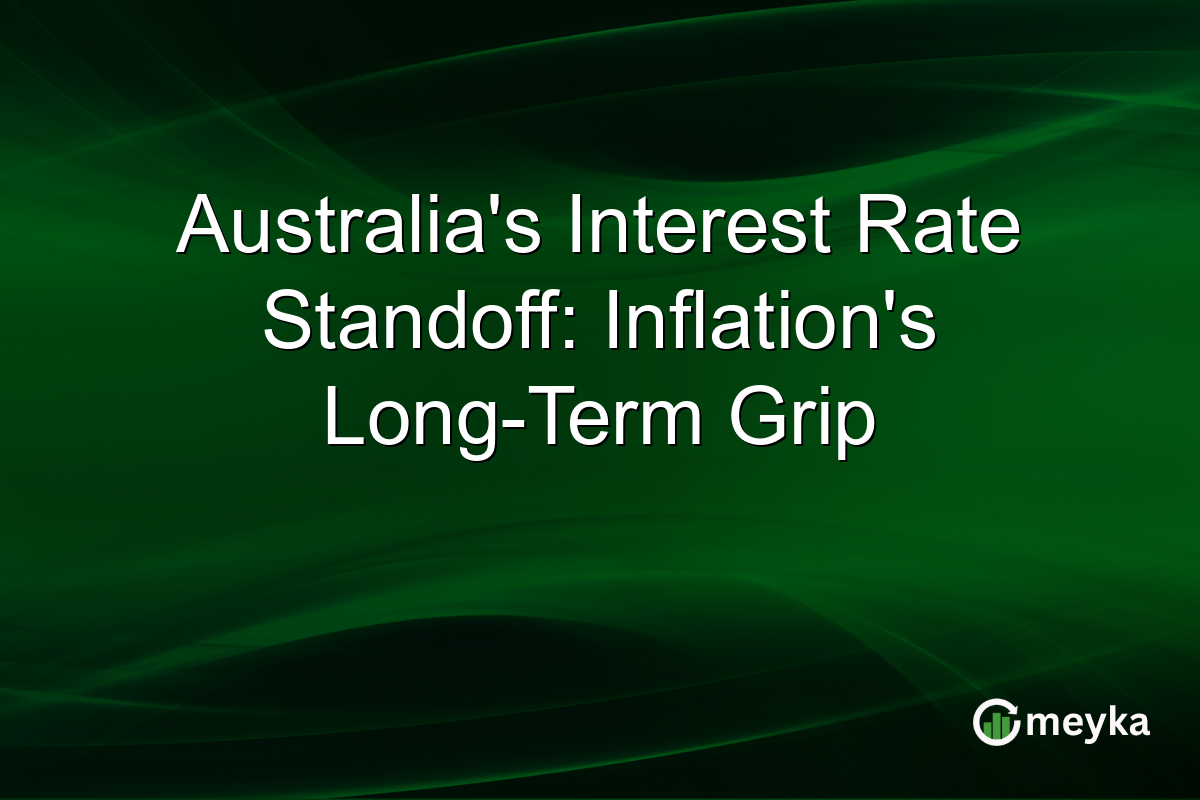Australia’s Interest Rate Standoff: Inflation’s Long-Term Grip
Australia’s economic landscape is framed by a significant decision from the Reserve Bank of Australia (RBA). By keeping the RBA cash rate steady at 3.6%, the bank signals a cautious approach amid consistent high inflation. With forecasts indicating inflation will remain above 3% until 2027, households feel the squeeze from mounting cost-of-living pressures. This situation has left many wondering about the RBA interest rates prediction and its broader economic implications.
Current Economic Context
The RBA’s decision to hold the cash rate at 3.6% reflects a complex financial scenario. Inflation persists, driven by global supply chain disruptions and local economic factors. Despite these pressures, the RBA has refrained from increasing rates further. This illustrates a balancing act between controlling inflation and supporting economic growth. For more insights, check out this analysis on The Guardian’s report.
Australia’s Inflation Forecast
The current Australia inflation forecast is concerning for many. Predicted to stay above 3% for two more years, inflation continues to challenge policymakers. Various factors such as energy prices and wage increases drive this sustained inflation. With no immediate rate cuts expected, Australians may need to brace for continued financial strain. This cautious approach by the RBA stems from its goal to anchor inflation without stifling economic recovery.
Economic Impact on Households
For households, the steady cash rate provides little comfort amidst growing expenses. Housing costs, food, and everyday essentials continue to rise, affecting budgets nationwide. The economic impact in Australia is profound, as families adjust their spending to manage rising costs. This situation can lead to reduced consumption, which may impact broader economic activity. Without any rate relief in sight, financial resilience becomes key for households.
Future Rate Predictions
Looking ahead, the RBA interest rates prediction remains cautious. Experts suggest that any future rate adjustments will depend on inflation trends and economic growth. Strategies may include holding rates steady or gradual tweaks to avoid economic shocks. As the RBA evaluates global and national economic data, its path will likely remain steady unless significant changes occur in economic conditions. Investors and households alike watch closely for signals from future RBA meetings.
Final Thoughts
Australia’s interest rate standstill amid persistent inflation underscores a challenging balance for the Reserve Bank of Australia. By maintaining the RBA cash rate at 3.6%, the central bank aims to navigate between controlling inflation and supporting the economy. However, with inflation forecasts suggesting prolonged pressures, households face continued economic strain. This environment highlights the importance of strategic planning for individuals and businesses alike. As we move forward, monitoring economic indicators and RBA announcements will be crucial for informed financial decisions. For real-time insights and predictive analytics, platforms like Meyka can offer valuable guidance in these uncertain times.
FAQs
The RBA is likely to maintain the current rate while closely monitoring inflation trends. Economic conditions will dictate any changes, but no rate cuts are expected soon.
The RBA cash rate influences borrowing costs, impacting mortgages and loans. A steady rate can mean continued pressure from high inflation without relief from rate cuts.
Factors include global supply chain issues, rising energy prices, and domestic wage pressures. These elements contribute to a persistent inflation rate expected to continue for some time.
Disclaimer:
The content shared by Meyka AI PTY LTD is solely for research and informational purposes. Meyka is not a financial advisory service, and the information provided should not be considered investment or trading advice.






